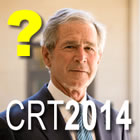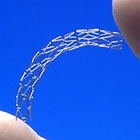 This past week saw publication of an update to the 2007 COURAGE trial which compared optimal medical therapy (OMT) to stenting (PCI) as the initial management strategy for stable coronary artery disease. (Please note the phrase “initial management strategy.” This will not be the last time you see it in this post.)
This past week saw publication of an update to the 2007 COURAGE trial which compared optimal medical therapy (OMT) to stenting (PCI) as the initial management strategy for stable coronary artery disease. (Please note the phrase “initial management strategy.” This will not be the last time you see it in this post.)
Appearing in the New England Journal of Medicine and titled “Effect of PCI on Long-Term Survival in Patients with Stable Ischemic Heart Disease,” this study, performed by Dr. Steven P. Sedlis and other COURAGE trial investigators, is described as “an extended survival analysis to examine the potential long-term survival benefit from initial PCI among the patients with stable ischemic heart disease who were followed for up to 15 years after initial enrollment in the COURAGE trial.”
This new analysis concluded: “…we did not find a difference in survival between an initial strategy of PCI plus medical therapy and medical therapy alone in patients with stable ischemic heart disease.” This also was the finding of the original COURAGE trial at five years. Continue reading

 This week started off with me watching a demonstration of fractional flow reserve (FFR) during multivessel PCI. This very instructive case was transmitted live from Hammersmith Hospital in London and featured Dr. Justin E. Davies showing how to perform FFR and, more importantly, how the use of FFR changed the treatment plan for this patient.
This week started off with me watching a demonstration of fractional flow reserve (FFR) during multivessel PCI. This very instructive case was transmitted live from Hammersmith Hospital in London and featured Dr. Justin E. Davies showing how to perform FFR and, more importantly, how the use of FFR changed the treatment plan for this patient. What does a Denial of Service Attack have to do with stents, angioplasty and PCI?
What does a Denial of Service Attack have to do with stents, angioplasty and PCI? Want to ask George W. Bush a question about his stent…or anything else?
Want to ask George W. Bush a question about his stent…or anything else?  Former President George W. Bush received an angioplasty and stent this morning at
Former President George W. Bush received an angioplasty and stent this morning at  Yesterday’s edition of USA Today carried an article by Peter Eisler titled, “
Yesterday’s edition of USA Today carried an article by Peter Eisler titled, “ Today the editors of the HEART Group Journals, comprising the Journal of the American College of Cardiology and other participating cardiovascular publications, issued a “
Today the editors of the HEART Group Journals, comprising the Journal of the American College of Cardiology and other participating cardiovascular publications, issued a “

